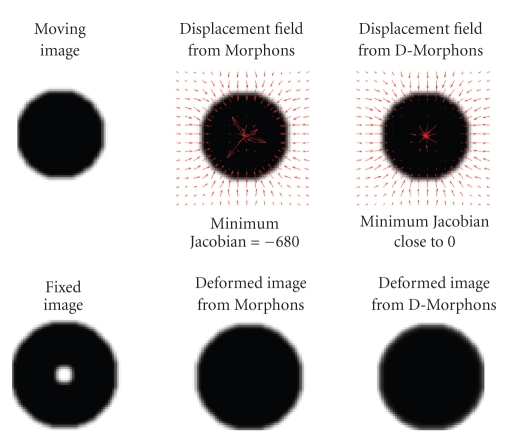Figure 5.
Results of the registration between 2 images using Morphons and D-Morphons registrations, illustrating the case where a structure (i.e., the bright hole at the center of the fixed image) is missing in the moving image. Both methods lead to deformed images very similar to the fixed image except for the central bright part (because it was not present in the moving image). The diffeomorphic method produced very low but still positive Jacobian values ((J) close to 0) in the center of the disk. Given that the field is defined on the pixel grid of the fixed image, this means that the surface of the central bright part (which disappears in the moving image) corresponds, as expected, almost to a singular point in the moving image. The conventional method, however, produced highly negative Jacobians in the central part, leading to the creation of areas that are “mirrors” of areas in the other image.

